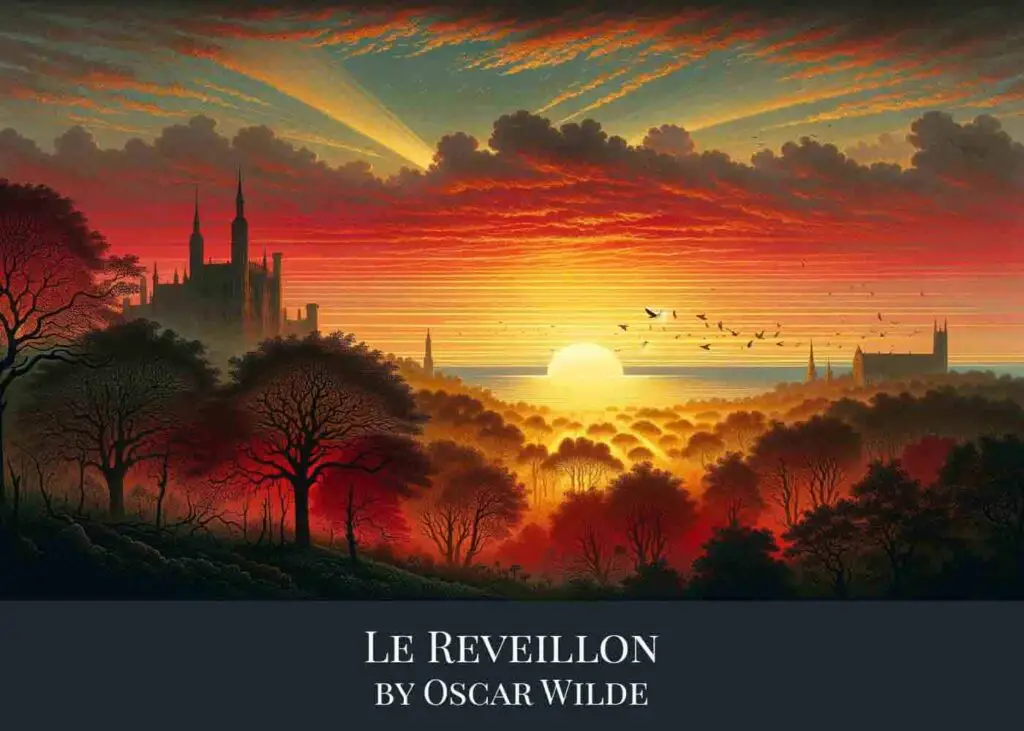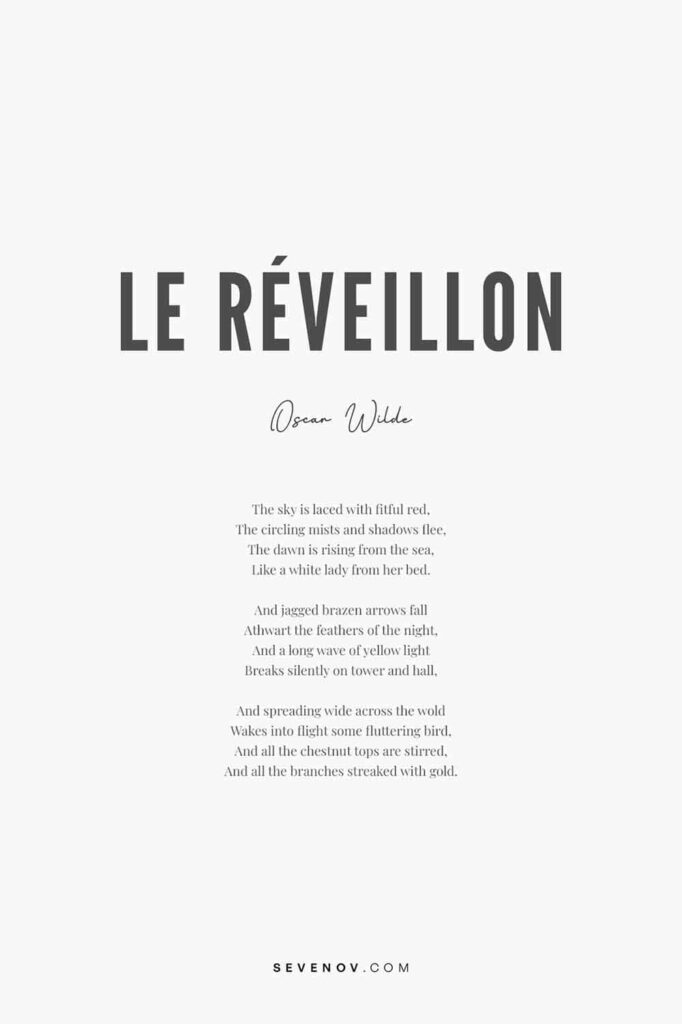
Le Reveillon by Oscar Wilde
“Le Reveillon” is an evocative poem by Oscar Wilde, included in his poetry collection Poems. The poem paints a vivid picture of a dawn landscape, using rich imagery to capture the transition from night to day. The title “Le Reveillon” suggests a waking or a revelation, fitting for the theme of dawn and awakening. For those who wish to delve deeper into the poetic world of Oscar Wilde, “Le Reveillon” along with other remarkable poems can be found in the online book Poems available at PageVio.
1. The Poem
The sky is laced with fitful red,
The circling mists and shadows flee,
The dawn is rising from the sea,
Like a white lady from her bed.
And jagged brazen arrows fall
Athwart the feathers of the night,
And a long wave of yellow light
Breaks silently on tower and hall,
And spreading wide across the wold
Wakes into flight some fluttering bird,
And all the chestnut tops are stirred,
And all the branches streaked with gold.

Size: 8″ x 12″ (2:3 ratio)
Format: PDF
Copyright information: For personal use only
Note: Actual poster background color is white. For the sample poster, the background is made gray for illustration purpose.
2. Le Réveillon Analysis
“Le Reveillon” describes a vivid and picturesque dawn, using metaphorical language to bring the scene to life. Let’s examine each stanza:
1. The first stanza sets the scene with a dramatic sky “laced with fitful red,” suggesting the early light of dawn breaking through. The imagery of “circling mists and shadows” fleeing implies the disappearance of the night. The dawn rising from the sea is likened to “a white lady from her bed,” a metaphor that personifies the dawn as a gentle, elegant figure, awakening and rising.
2. The second stanza continues the description of dawn with more dynamic imagery. “Jagged brazen arrows fall athwart the feathers of the night” likely refers to the first rays of sunlight piercing through the darkness of the night sky. The “long wave of yellow light breaks silently on tower and hall,” paints a picture of sunlight spreading over buildings, bringing light to the landscape.
3. The third stanza describes the impact of dawn on the natural world. The spreading light “wakes into flight some fluttering bird,” indicating the beginning of daily activity in nature as birds start to stir with the light. The mention of “chestnut tops are stirred” and “branches streaked with gold” vividly depicts how the sunlight touches and transforms the trees, highlighting their details and beauty in the morning light.
The poem beautifully captures the essence of a tranquil and serene dawn. It uses evocative and rich imagery to describe the transition from night to day, illustrating how the first light of dawn invigorates and transforms the landscape. The dawn is not just a physical phenomenon but is imbued with life and personality, affecting everything it touches with its gentle yet powerful presence.
3. Conclusion
May the vivid imagery of dawn in Oscar Wilde’s “Le Reveillon” captivate you, as it paints the sky with fitful red and golden light. Delve further into the poetic world of Wilde with our list of his works.




